Vochlea Dubler 2 review: live audio-to-MIDI solution is still better for beats than pitch
Vochlea’s real-time voice-to-MIDI converter is now available in software only, and its new chord functions could help you venture down new creative avenues, but get your MIDI-editing hat on.
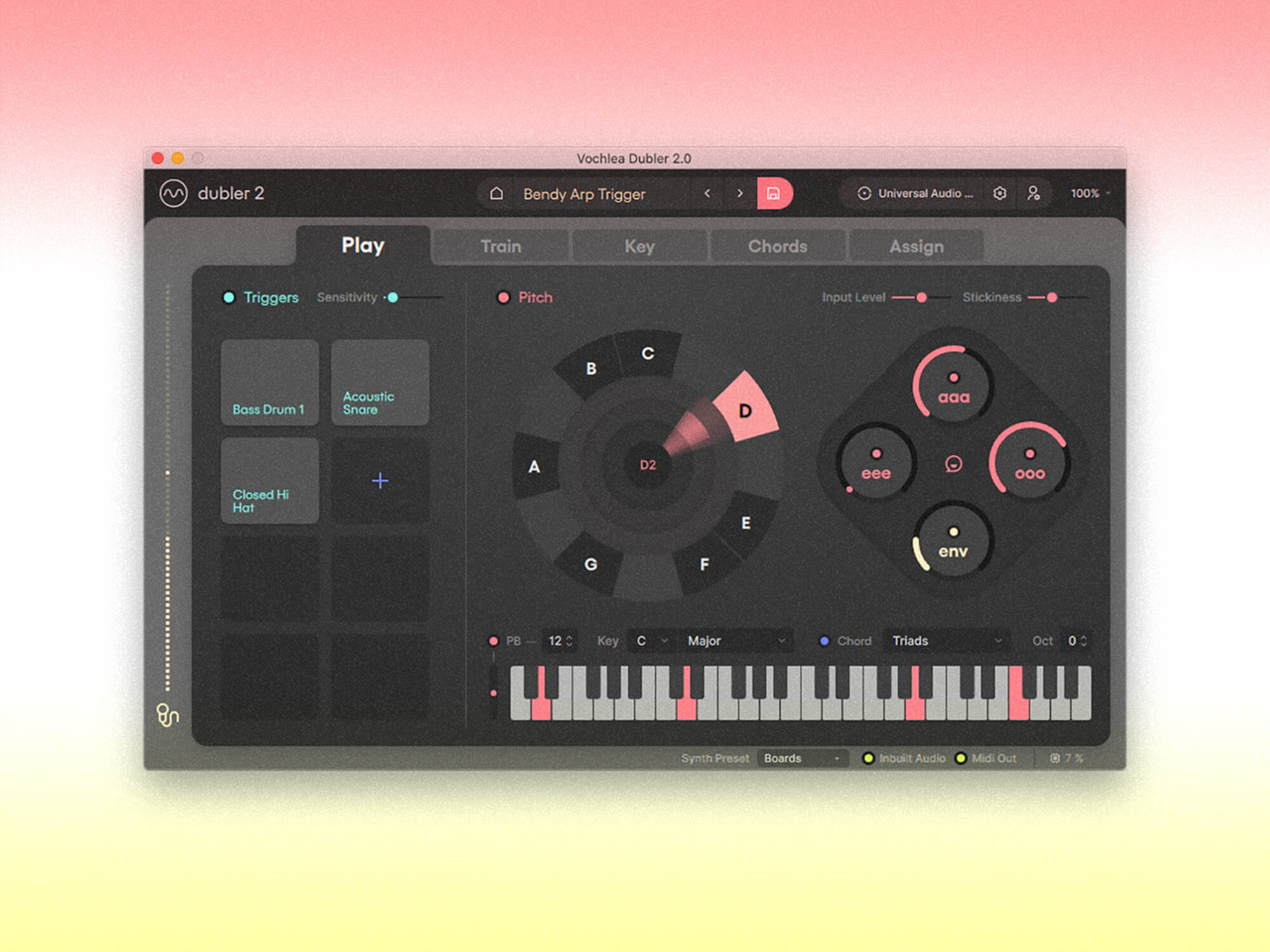
Review Overview
Our rating
8
Our verdict
⊕ Updated Chord section can get you out of creative ruts
⊕ The ability to use your own mic is a great advantage
⊕ 7-day trial period
⊖ If you’re keyboard proficient, the pitch-to-MIDI functions might be redundant
⊖ Almost all MIDI generated needs editing
Price Software $249/£189, Upgrade $78/£59, Dubler Studio Kit 2 $329/£249
Contact Vochlea
The original Vochlea Dubler Studio Kit impressed with its uncanny ability to turn beatboxing into MIDI with incredibly low latency. However, its clever software component was previously only available bundled with Vochlea’s USB mic. Contrastingly, you can now buy Dubler 2 software on its own and use any dynamic mic you already own, bringing down the price.
So, what else is new?
Dubler 2 has significantly improved chord-handling abilities that genuinely open unexpected creative paths, and it’s a little more immediate than V1. However, if you want to turn those golden song ideas in your head into production-ready tracks just by singing them, Dubler 2 is no magic bullet.
The software works with any dynamic mic; we used an SM7B and a Rode PodMic. The advantage of using Vochlea’s mic (available in the more expensive kit) is that there’s no calibration needed. Even so, calibration takes under a minute with a third-party model. Of course, the other benefit of using your own mic is that you can simultaneously record audio, should you so desire.
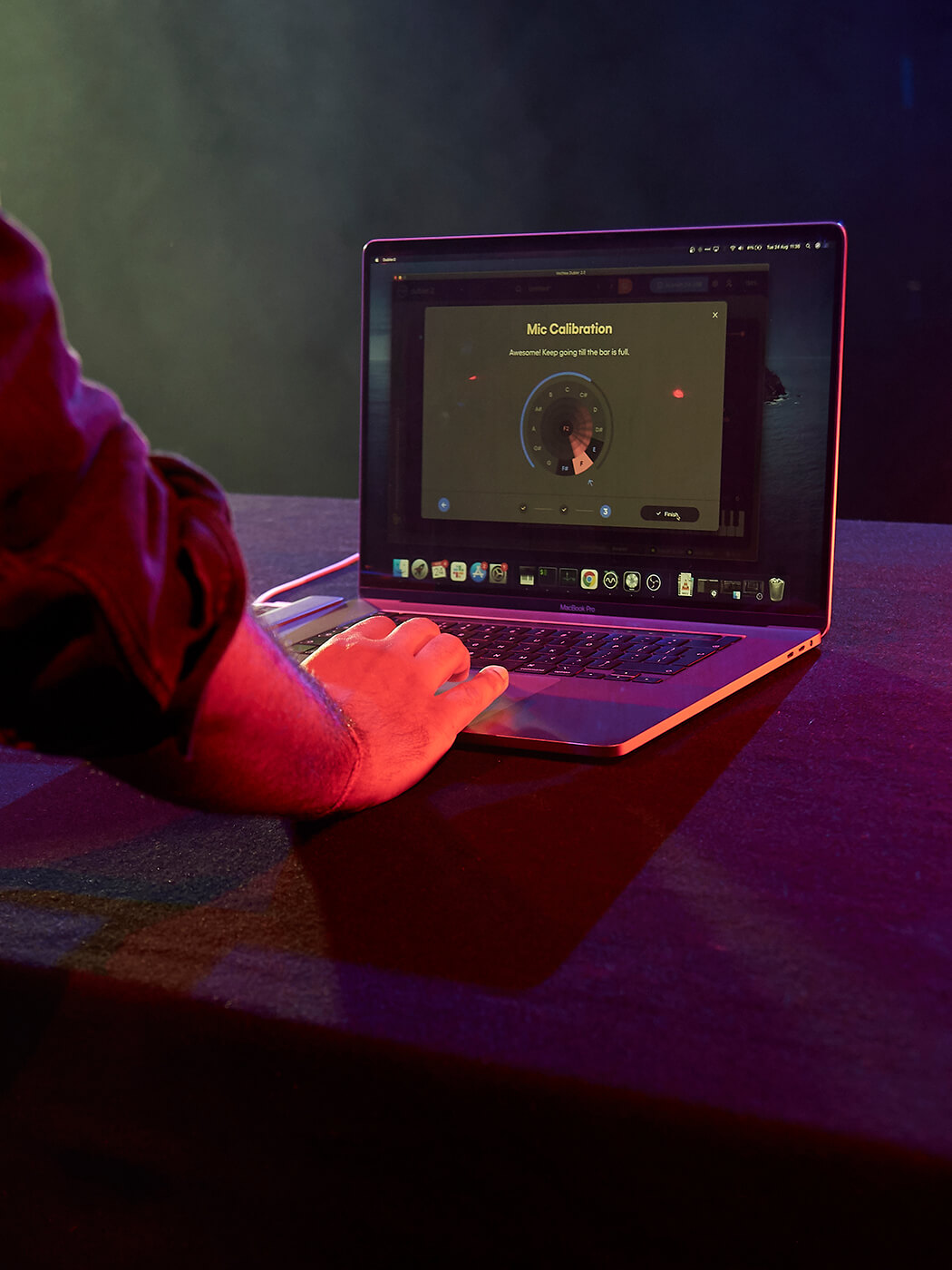
As far as beat detection goes, you need to ‘train’ (record) your drum triggers for each sound. Training is remarkably streamlined in this version. You just repeat each trigger sound up to 12 times, then move on to the next. These can be beatbox drums, finger clicks, claps, and other short, percussive sounds – each must be as distinct as possible. Once you get into the swing of it, recording triggers for three sounds can take as little as 15 seconds.
As with the original Dubler, as soon as you expand past three triggers, the likelihood of mistriggering increases. In our tests, the sweet spot was training just a kick, snare and hi-hat via beatboxing and training a finger click and a real handclap to trigger two other sounds.
The triggering is extremely fast and accurate, especially if your parts are relatively simple. However, accidental triggers (specifically double triggers) can get in the way of programming drum parts speedily. For us, virtually all MIDI that Dubler 2 spits out requires editing. At the bare minimum, you’ll want to memorise your MIDI quantise shortcut. We needed ours a lot.
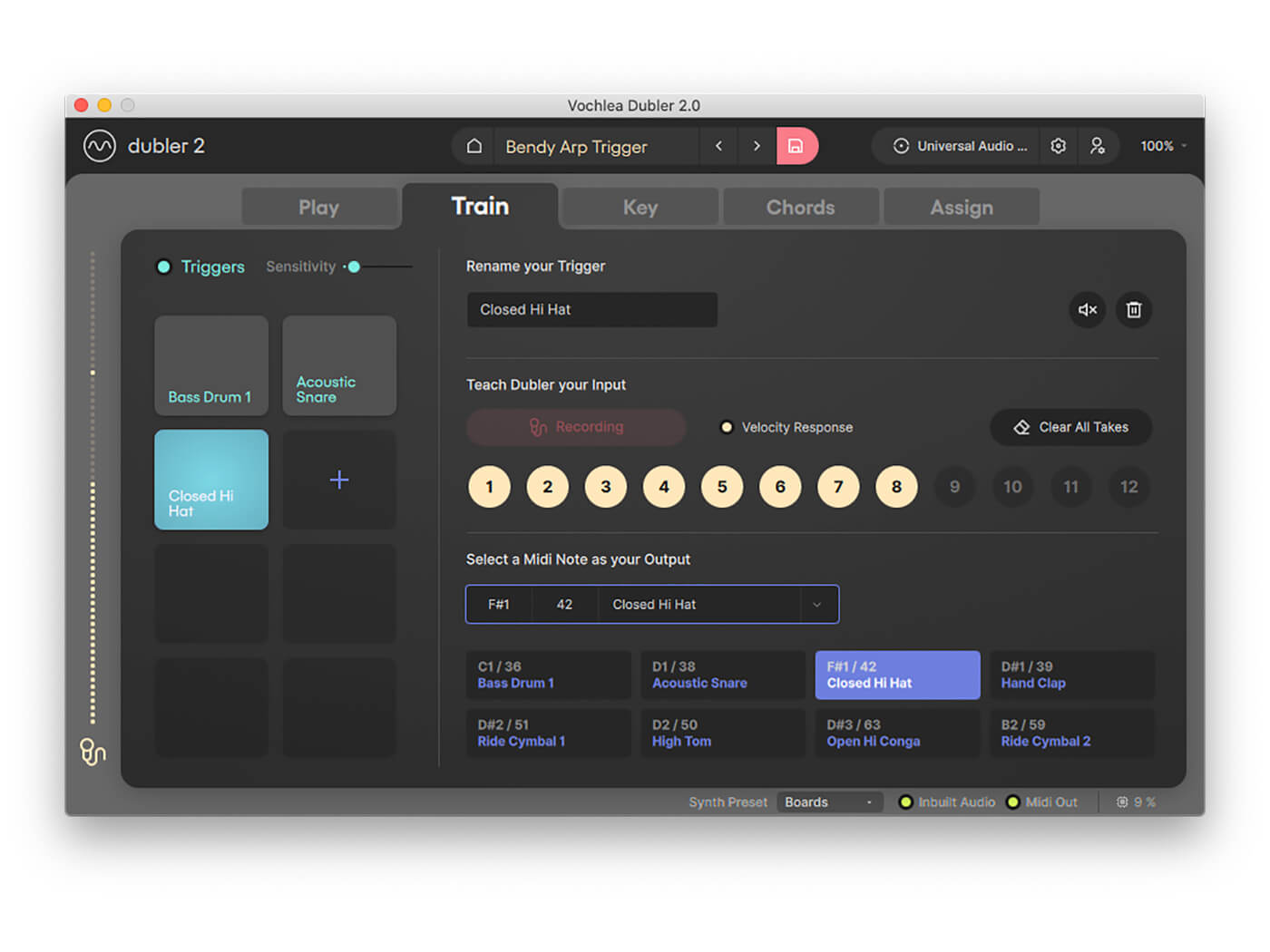
Virtually everything about Dubler 2’s layout and feel is more inviting than version 1. The interface is far better organised with tabs for each major function or setting.
Where the original Dubler software lacked immediacy, Dubler 2 has it in spades. That’s largely down to this version having built-in sounds. That means there’s no DAW setup required before you can start training the software. It might seem a minor point, but psychologically, it makes the whole package far more welcoming and exciting than its predecessor. There are 808 drums and a range of different sounds for the Pitch and Chord outputs, including wobble bass, trumpets and 8-bit pads and pads. Immediately upon launching, you get a fantastic sense of what Dubler is capable of.
The pitch-tracking section is vastly improved in Dubler 2. Our vocal talents leave much to be desired, but we could still produce something musical from the software. That said, if your vocal abilities are lacking, Dubler 2 might not be all you hope for.
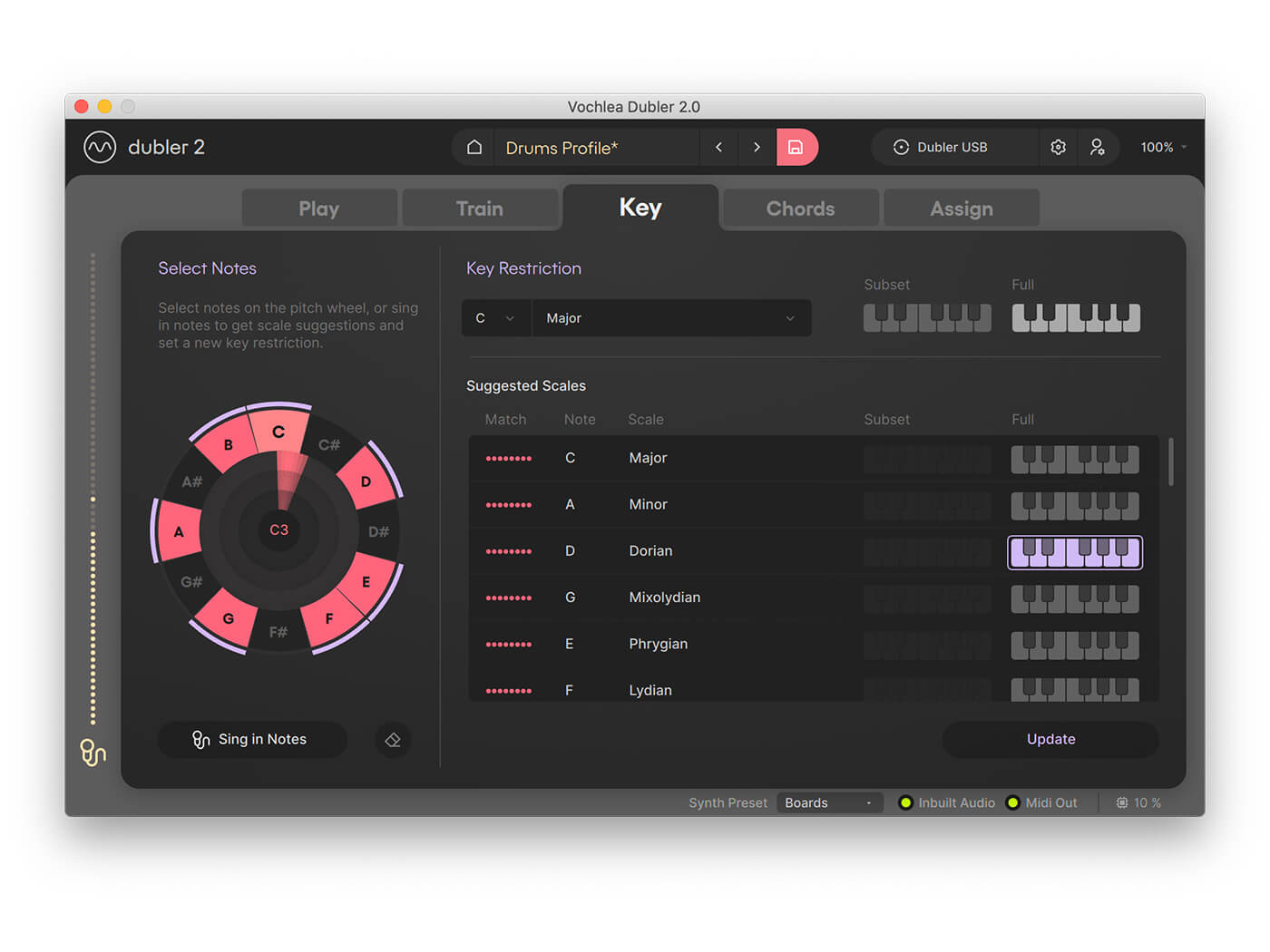
Coaxing useful pitched results from Dubler 2 depends on a ‘Stickiness’ control that balances timing accuracy against pitch stability. The less stickiness, the more agile the note movements can be. The downside is that if you’re not entirely in control of your vocal pitch, the software can struggle to pin down your intent, flitting back and forth between notes and creating extra MIDI data for you to edit later.
One of the more useful features is the Sing In Notes function, where you sing in your intended part, and the software determines which key includes the notes you need. The benefit of defining a key is the Key Restriction function – a scale quantise mode – which helps the software interpret your vocal input. A small amount of music theory goes a long way for this section because of all the new scales available, but it’s fairly easy to use.
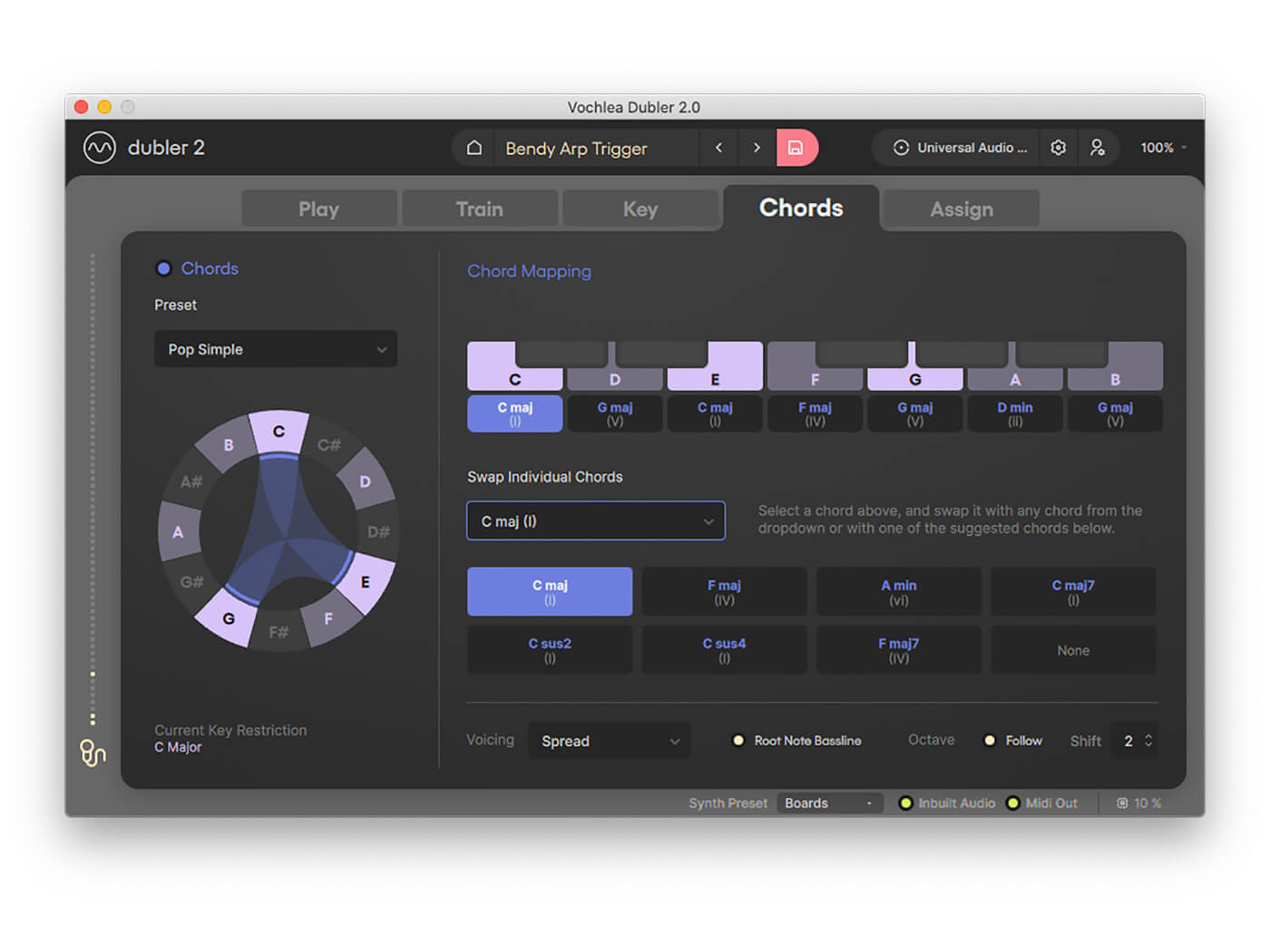
The most significant creative difference in Dubler 2 is the updated Chords mode. After you’ve set your key, Chord mode turns each sung note into a full MIDI chord. This makes it extremely easy to create pretty complex chord progressions quickly. The interface is more advanced than DAW-stock chord trigger MIDI effects. You can set the behaviour just to create triads, or there are Pop Simple and Pop Advanced modes that automatically harmonise notes with appropriate (and increasingly complex) chords. Once you factor in an automatic root note bassline function and the ability to have your chords either clustered or spread out, its benefits become apparent. The Chords mode turns Dubler 2 into an enormously flexible tool for composing with strings, synths, keys and more. In short, if coming up with compelling chord progressions isn’t your forté, this could add an extra touch of musicality.
As well as offering pitch, chords and drum triggers, Dubler is also a controller, turning vowel sounds (AAA, EEE, OOO) and level (ENV) to CC messages. The tools for controls in Dubler 2 are, again, refined over the original. You can set min and max input and output values to take far greater control with your voice, and it does make a big difference if you elect to use this function.
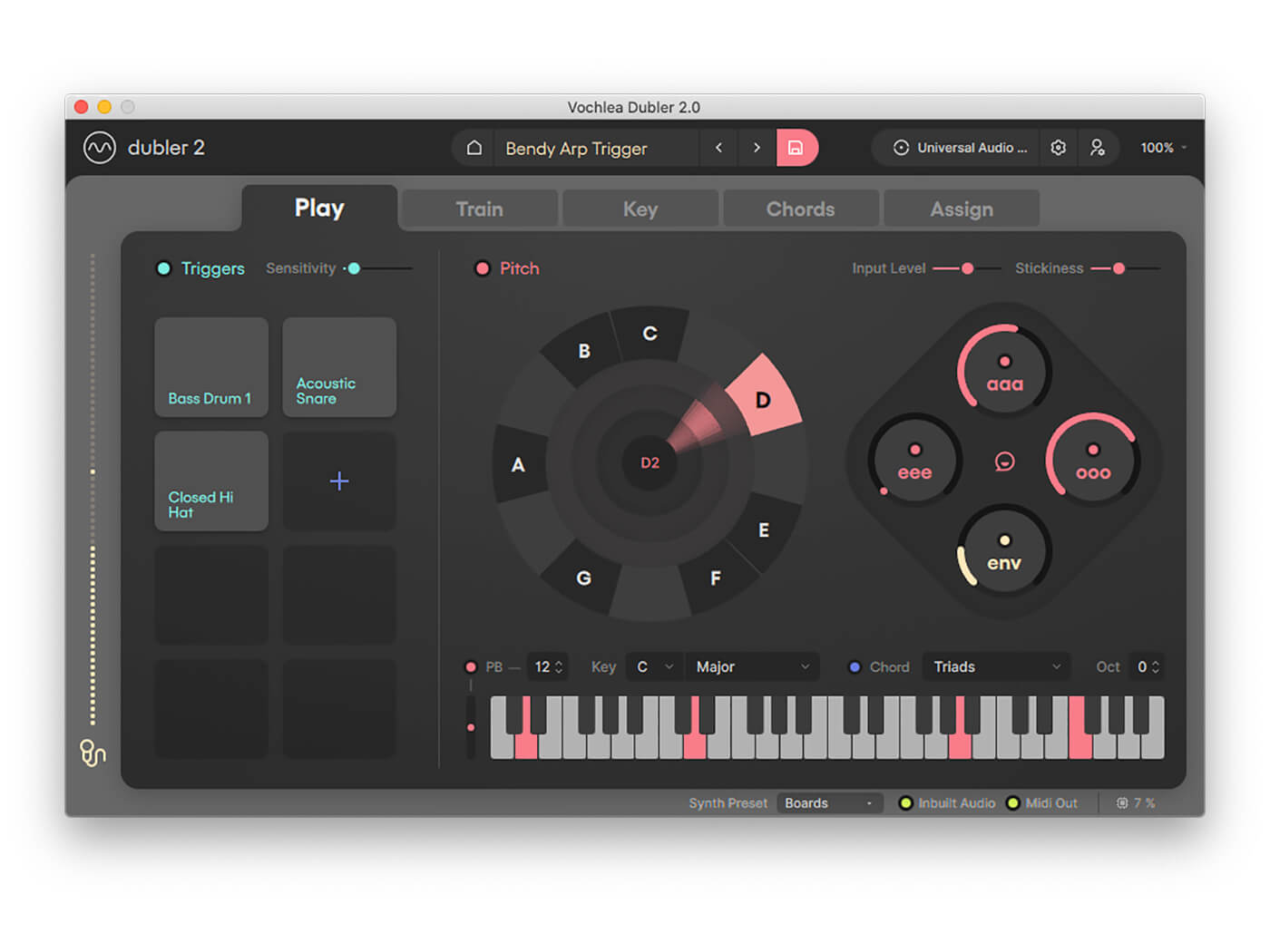
An everyday use case is mapping the AAA vowel sound to the filter cutoff frequency on a synth VST. This way, as you make an open-mouth sound, the VST synth’s filter opens. In this case, the synthesised sound becomes a perfect analogue for the sound you’re singing, and anyone can do it with minimal MIDI mapping.
In theory, you can map these controls to any parameter you like, but most other mappings (blending between sounds, for example) feel a little too abstract to pull off without a decent amount of practice. That’s the issue with the Dubler concept. If you’ve already got a DAW controller, turning a knob will likely be smoother and require less editing than using Dubler 2. If Dubler 2 is your first foray into controllers, then it’s a valuable addition. Likewise, if you’re performing and your hands are busy playing other musical parts, then having this level of control using just your voice could make all the difference.
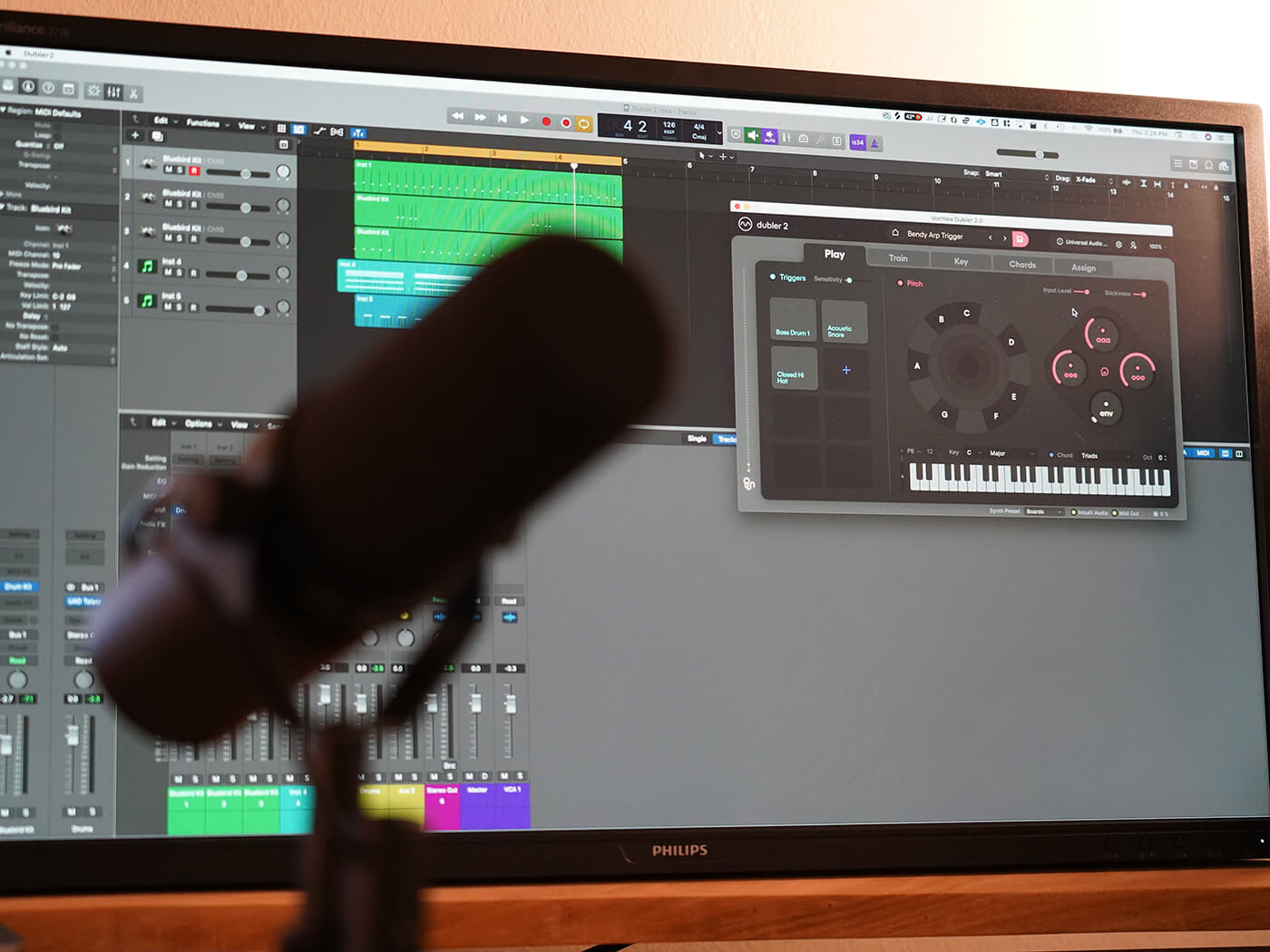
In the right hands, Dubler 2 can be a capable creative sidekick. You only need to watch Vochlea’s artist videos to see that. For pitch-to-MIDI, Dubler 2 is most potent when used by a skilled, accurate vocalist. It’s an instrument all of its own that requires you to invest time and energy to become proficient. If holding a tune isn’t your strong suit and you already get by with keyboards or pads (and chord triggering), Dubler 2 could well cause more frustration than just sticking with traditional controllers.
However, its great strength remains its fast and accurate beatbox recognition abilities; here, it’s truly first-class. As a very amateur beatboxer, I’ve often dreamed of fully translating the beats inside my head into the DAW. Dubler 2 easily provides the closest approximation yet.